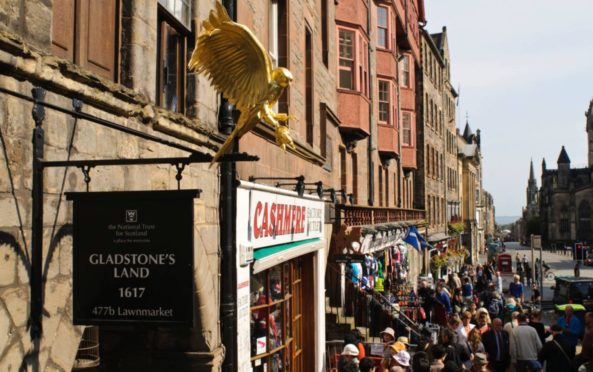
Edinburgh’s oldest continually trading place has reopened on the Royal Mile after a £1.5m restoration.
Here, Lindsay Middleton, PHD researcher of food histories at Glasgow and Aberdeen universities, tells Megan McEachern the Honest Truth about Gladstone’s Land
Can you tell us a little about the history of the house?
We know there was a building on the site from at least 1501, but the oldest part of the current property dates from the 1550s. The front section was added on by Thomas Gladstone in the early 17th Century and there is a side wing that was built in the 1730s. The new re-imagining of Gladstone’s Land is thanks to donations and memberships.
How can one house give us such an insight into life for people in the 16th and 17th Centuries in Edinburgh?
Each floor of the revamped visitor experience tells the story of a different time period in the history of the building. Visitors start in 1911, 20 years before the property was scheduled for demolition, and work backwards in time to the house’s heyday in the early 17th Century.
What was Edinburgh’s position in the world at this point in terms of trading?
Edinburgh became a hub of trade from the start of the 17th Century. Its position next to the port of Leith meant it was primed to send ships all over the world. It was the centre of trade in Scotland at this point and, as a result, the city was full of markets.
These markets traded in both Scottish and imported, “exotic” goods, with vendors selling everything from cockles to silk to people of all classes. Goods would come to Edinburgh to be sold within Britain or exported again, and so it was certainly a key point for international trade.
Was Edinburgh involved in the transatlantic slave trade?
Edinburgh did play a role in the transatlantic slave trade. The international goods brought into the city via the port and markets meant many merchants were indirectly or directly involved in slavery. In the latter half of the 18th Century, money from the transatlantic slave trade was pouring into the establishment of Edinburgh’s New Town.
What sorts of things were being traded from Gladstone’s Land and in Edinburgh at the time?
In the 17th Century, the wealthy merchant John Riddoch lived in Gladstone’s Land and traded fine goods through his business. Raisins, figs, ginger, sugar, pepper, cinnamon, nutmeg, rice, almonds, cloves, lemon-peel marmalade, and tobacco were listed in Riddoch’s inventory.
Simultaneously, his servant Issobell Johnstone ran a tavern out of the cellar of the house, selling ale to customers. In the 18th Century, Elizabeth Pillans and her husband William Dawson ran a draper’s shop out the house, selling items such muslin, silk, satin, lace, ribbons, and furs – imported goods for wealthy customers.
How was food production different then to now?
It was not until the 19th Century that food production became widely industrialised by innovations like tin cans, railways, steamships and refrigeration. Until then, most food would have been far more localised.
Farmers drove livestock into Edinburgh to be butchered by “fleshers” and sold. Fisherman supplied vendors with fish and shellfish from the nearby coast. Vegetables and fruits were grown or foraged from the countryside, or in small burgage plots which were spaces between buildings, while grains like oats and rye came from the Scottish countryside. Food could be preserved, but the lack of storage space meant people bought food as they needed it.
Were new, “exotic” foods arriving as the world was being explored by European traders?
Sugar, “exotic” fruits like figs and lemons, almonds, spices and rice were all coming into the city in the 17th Century. Wine and spirits were also imported at this time, but these goods were only enjoyed by the wealthy. Cookbooks published in 18th-Century Edinburgh show international recipes: Italian, French, Polish and Dutch dishes show that trade influenced the Scottish diet.

Enjoy the convenience of having The Sunday Post delivered as a digital ePaper straight to your smartphone, tablet or computer.
Subscribe for only £5.49 a month and enjoy all the benefits of the printed paper as a digital replica.
Subscribe